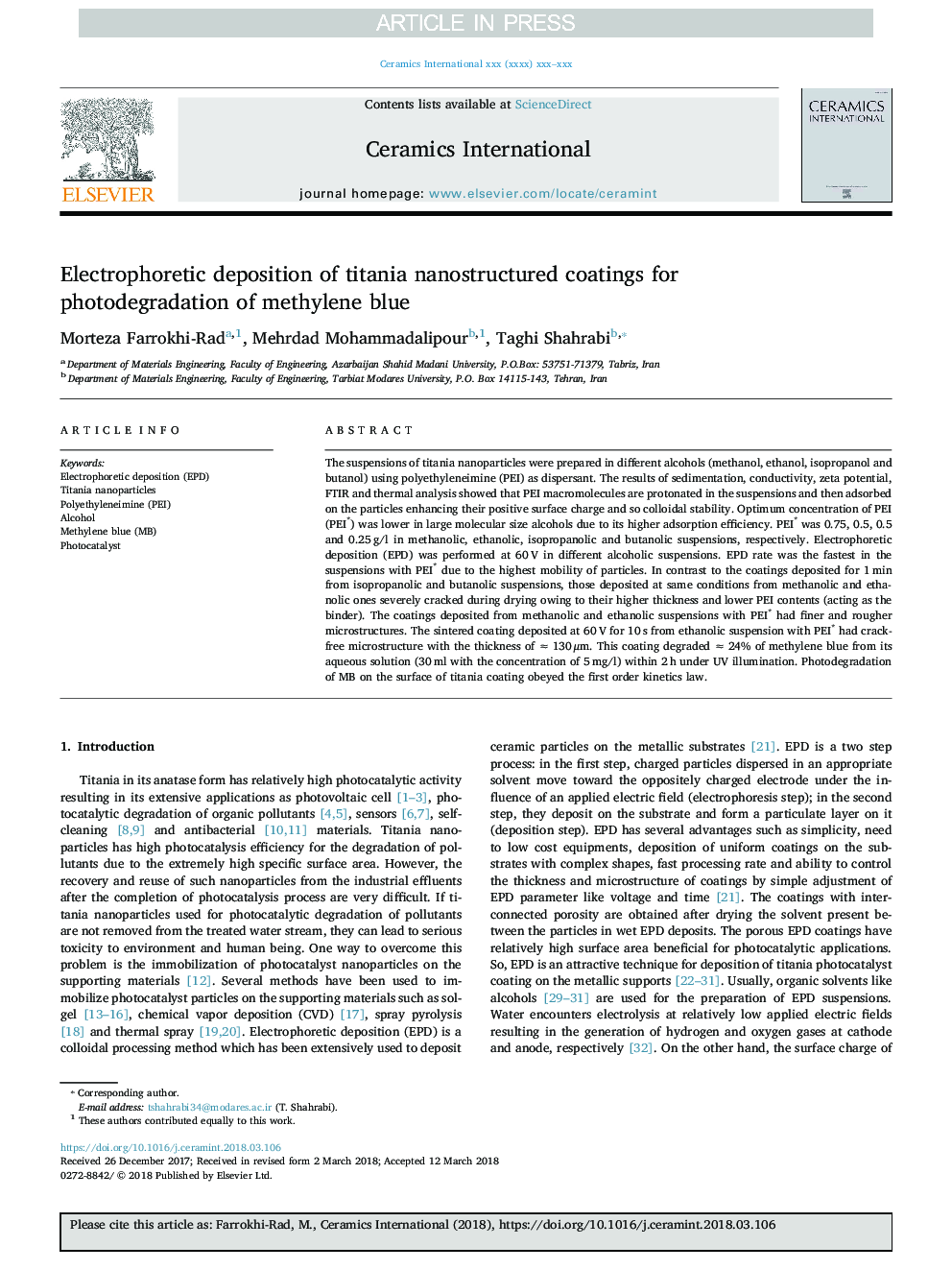| Article ID | Journal | Published Year | Pages | File Type |
|---|---|---|---|---|
| 7887315 | Ceramics International | 2018 | 10 Pages |
Abstract
The suspensions of titania nanoparticles were prepared in different alcohols (methanol, ethanol, isopropanol and butanol) using polyethyleneimine (PEI) as dispersant. The results of sedimentation, conductivity, zeta potential, FTIR and thermal analysis showed that PEI macromolecules are protonated in the suspensions and then adsorbed on the particles enhancing their positive surface charge and so colloidal stability. Optimum concentration of PEI (PEI*) was lower in large molecular size alcohols due to its higher adsorption efficiency. PEI* was 0.75, 0.5, 0.5 and 0.25â¯g/l in methanolic, ethanolic, isopropanolic and butanolic suspensions, respectively. Electrophoretic deposition (EPD) was performed at 60â¯V in different alcoholic suspensions. EPD rate was the fastest in the suspensions with PEI* due to the highest mobility of particles. In contrast to the coatings deposited for 1â¯min from isopropanolic and butanolic suspensions, those deposited at same conditions from methanolic and ethanolic ones severely cracked during drying owing to their higher thickness and lower PEI contents (acting as the binder). The coatings deposited from methanolic and ethanolic suspensions with PEI* had finer and rougher microstructures. The sintered coating deposited at 60â¯V for 10â¯s from ethanolic suspension with PEI* had crack-free microstructure with the thickness of ââ¯130â¯Î¼m. This coating degraded ââ¯24% of methylene blue from its aqueous solution (30â¯ml with the concentration of 5â¯mg/l) within 2â¯h under UV illumination. Photodegradation of MB on the surface of titania coating obeyed the first order kinetics law.
Keywords
Related Topics
Physical Sciences and Engineering
Materials Science
Ceramics and Composites
Authors
Morteza Farrokhi-Rad, Mehrdad Mohammadalipour, Taghi Shahrabi,
